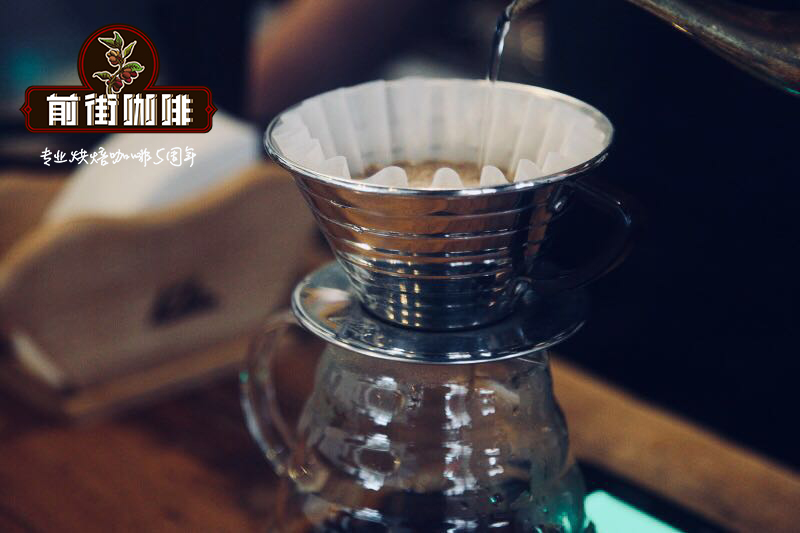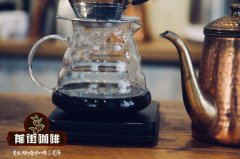Is Malawian Coffee good? Malawian Coffee tastes correct drinking method

Professional coffee knowledge exchange More coffee bean information Please pay attention to coffee workshop (Weixin Official Accounts cafe_style)
Malawai Mzuzu AA Women's Coffee Blend comes from about 200 small-scale farmers and consists of 80% Nyika Catimore and 20% Geisha varieties from farms at 4000 feet and 6200 feet. In summary, the Malawi Mazuzu Partnership is comprised of approximately 4000 small-scale farmers spanning over 5 coffee areas. The developed cooperatives that supply most of the coffee for the Mzuzu Coffee Growers Union are in the northern part of Malawi from Mzimba upwards. More cooperatives are also developing in the central part of the country around Deza. All coffee is washed thoroughly and dried. They are stored in bags and kept in a cool, well-ventilated place for at least two weeks, usually more than 12 weeks, before being sent to the Mzuzu coffee growing cooperative for joint dry grinding for processing.
Misuku Mountain, the northernmost region is located near the Songwe River and forms the natural boundary between Malawi and Tanzania. It consists of four parallel ridges and plateaus at an altitude of 1700 - 2000 meters. The area is nearly 320 km from Mzuzu City, Malawi's commercial and administrative headquarters in the north. Soils in coffee growing areas are insoluble nitrifying soils found in sloping and protruding narrow ridges and moist nitrifying soils found in lower valley slopes. The highest temperature recorded since 1983 was 21.9 degrees Celsius in November, while the absolute minimum temperature in June was 9.9 degrees Celsius at 1 600 metres above sea level in Mwaringo. Annual rainfall ranges from 1,500 mm to 2,000 mm. There are showers from November to April and from June to July. Heavy cloud cover between November and July delayed new canopy formation, early flowering and fruit dropping.
Poka Mountain, located in the eastern part of Nika National Park. The area is dominated by the Nika Plateau at an altitude of 2500 meters. Coffee is usually grown at altitudes of 1200 to 2500 meters. The soil on this steep slope is the best in the northern coffee-growing region. They are formed in the Karros layer and are as acidic as those formed in the basement layer due to natural leaching. The annual average temperature ranges from 16 to 19 degrees Celsius and averages about 7 degrees Celsius each month, with July being the coldest month and November the hottest.
Viphya North occupies a portion of the North Viphya Plateau, which is separated from the Nhatawan Plateau by a deep valley of the Lizanghumi River. Typical heights are 1,200 m to 1,500 m. In some places, sea levels rose to 1800 meters. It is located 80 km from the city of Mzuzu. The soil is deep, acid red clay or clay loam/sandy clay, saturated nitrifying soil, moderately drained. Annual rainfall ranges from 1500mm to 1800mm, with higher rainfall at higher elevations in the Yujumala Reserve. The annual average temperature ranges from 15 to 18 degrees Celsius. The average monthly variation is about 7 degrees Celsius, with July being the coldest month and November the hottest.
The Nhatawan Highlands include areas southwest and southeast of the city of Mzuzu at the southern tip of the Viphya Plateau. Altitude ranges from 950m to 1300m in this area and 2000m in other areas. The city of Mzuzu is located on the saddle of the Viphya Plateau at 1280 meters between the north and south. Rain is possible at any time of the year, and temperatures may drop to freezing during the cold season (June to August). The annual rainfall ranged from 1 300 to 2 300 mm. The lowest temperature recorded at Muk Tso Airport was 1 255 m. It was 0 degrees Celsius in June/July and 32.7 degrees Celsius in October. These temperatures cause coffee trees to be exposed to cold winds, lack shade, and develop "hot and cold" symptoms. Coffee farmers have the skills necessary to make coffee survive in this environment.
Southeast of Mzimba lies in the south of the South Viphya Plateau. The venue is 190 km away from Mzuzu city. It occupies the upper reaches of the Luarezi, Rukuru and Rupasi river basins. The altitude is generally 1200 meters to 1300 meters, and the altitude in some areas reaches 1700 meters. Coffee grown in this area is confined to deep soils and fine-grained, dusty clays and clay loams formed by cordorite gneiss. Rainfall is high in the coffee-growing Missy and Kapita areas. Annual rainfall ranges from 900 mm to 1400 mm.
"I want my fellow women to do what I'm doing-have a good house, eat good food, educate their children. I want my village to become a town. I make coffee for women because I love coffee! Linly Msyali Mkalira, producer of Mzuzu coffee, his coffee contributed AAA/AA batches
Mzuzu Coffee noted that land and tree ownership are major factors limiting women's access to coffee income. Both men and women develop and support Mzuzu Women's Coffee Policy. Mzuzu Women's Coffee originated from women farmers who owned their own coffee fields. Income is paid directly to these women in order to give them decision-making power over their own income. In addition, a bonus of $0.20 per pound will be paid to women who participate in the coffee program. About half of the premiums are paid directly to female farmers, and the other half goes to the female coffee program, which is decided by participating farmers after they receive the premiums.
The plot dates back to the women farmers of the Mzuzu Coffee Growers Cooperative Union. The local language name is Ama widu asele mu ulimi wa khofi ndi nthazi, which means "our women entered the coffee business with enthusiasm and energy!" The name comes from the Tongan language spoken in Nhatabai Gaoti.
Cup test notes
Maple, vanilla, spices, brown sugar, honey, raisins, highly complex
END
Important Notice :
前街咖啡 FrontStreet Coffee has moved to new addredd:
FrontStreet Coffee Address: 315,Donghua East Road,GuangZhou
Tel:020 38364473
- Prev

How do Kenyan Kangunu Coffee drink Kenyan Coffee rating system Kenyan Coffee beans
Professional Coffee knowledge Exchange more information on coffee beans please follow Coffee Workshop (Wechat official account cafe_style) kanguru AA-Kenya this coffee is produced by many small farmers, who are members of farmers' cooperatives in the south of Kagaari and supply coffee to the Kangunu Coffee Factory in Embu District, Kenya, near the town of Runyenjes. The area is located in the mountains of Mount Kenya.
- Next

Why are Yemeni coffee beans so precious? how about Yemeni coffee?
Professional coffee knowledge exchange more information about coffee beans Please follow Coffee Workshop (Wechat official account cafe_style) Coffee bushes spread to Yemen shortly after coffee was discovered in Ethiopia. The mysterious Sufis wrote stories about coffee as early as the 15th century. With the increase in coffee cultivation in Yemen, exports start from the ancient port of Al-Makha (the modern term Mocha
Related
- Beginners will see the "Coffee pull flower" guide!
- What is the difference between ice blog purified milk and ordinary milk coffee?
- Why is the Philippines the largest producer of crops in Liberia?
- For coffee extraction, should the fine powder be retained?
- How does extracted espresso fill pressed powder? How much strength does it take to press the powder?
- How to make jasmine cold extract coffee? Is the jasmine + latte good?
- Will this little toy really make the coffee taste better? How does Lily Drip affect coffee extraction?
- Will the action of slapping the filter cup also affect coffee extraction?
- What's the difference between powder-to-water ratio and powder-to-liquid ratio?
- What is the Ethiopian local species? What does it have to do with Heirloom native species?

